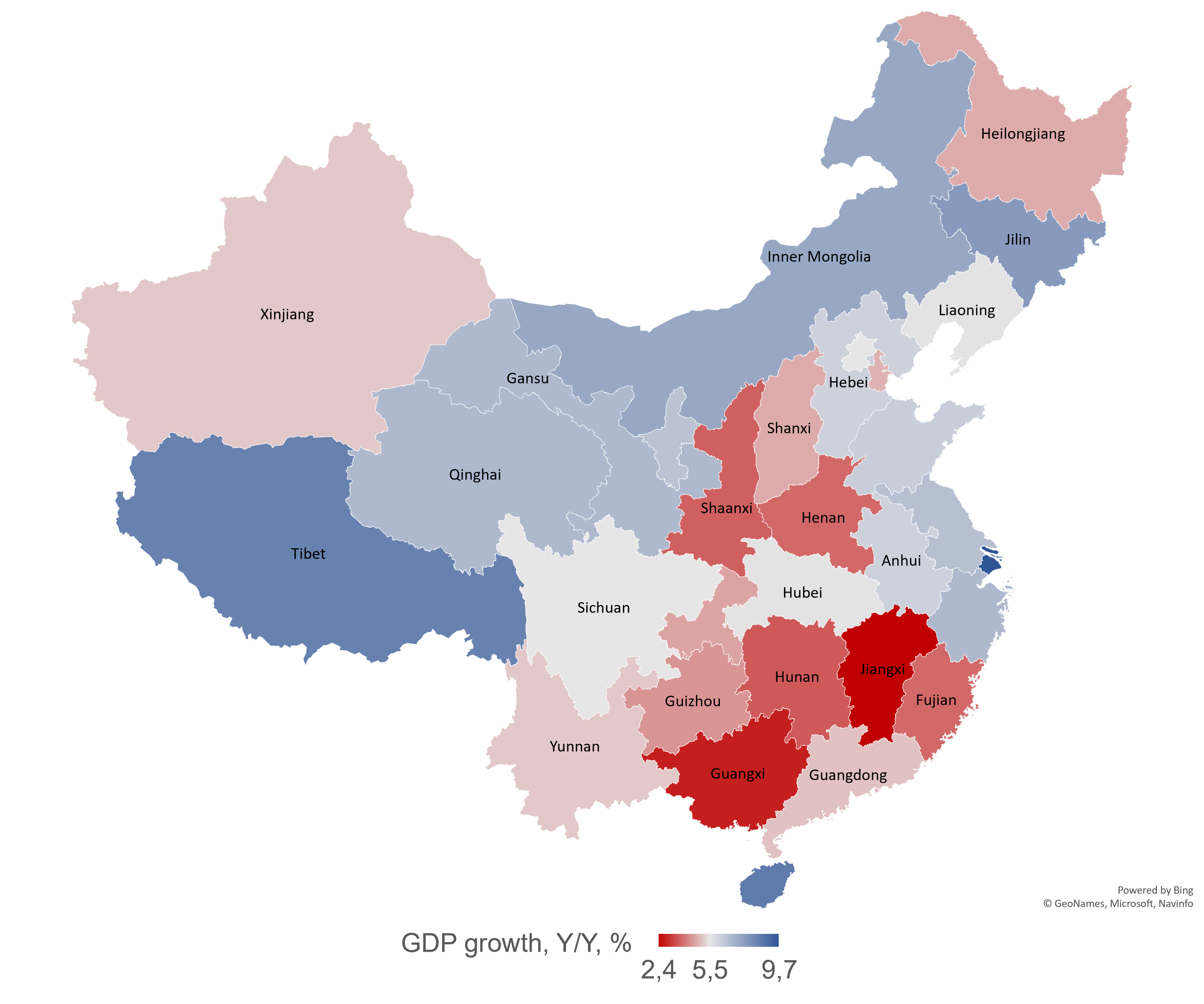BOFIT Weekly Review 32/2023
Economic growth in provinces of central and southern China lower than in the rest of the country
In the first half of 2023, economic growth in 16 of China’s 31 provinces did not surpass the national average for on-year GDP growth of 5.5 %. The lowest growth numbers were posted in central and southern coastal provinces. GDP growth remained below 3 % in the heavily agrarian southern provinces of Jiangxi and Guangxi. Below-average growth also occurred in the southeastern coastal province of Fujian, as well as the interior provinces of Henan and Hunan, where the largest contributors to economic growth are agriculture, raw material production and manufacturing.
Among all province-level administrative regions, Shanghai registered the highest growth (9.7 %), a somewhat deceptive number due to the exceptionally low reference basis due to covid lockdowns of spring 2022. Shanghai’s 3 % first-quarter growth was distinctly more modest and lagged the pace of national GDP growth. Guangdon, the country’s largest province, also experienced below-average GDP growth this year (5 % in 1H23). The southern coast province’s economy is highly dependent on foreign trade and industry, core sectors that have slowed throughout China. Jiangsu, China’s second largest provincial economy, recorded substantially higher growth (6.6 %). Jiangsu’s economic structure is quite diverse. In addition to agriculture, the province is a major producer of e.g. raw materials, electronics, chemicals, cars and renewable energy equipment. This populous province is also a major tourist destination, allowing for a thriving service sector.
The revival of tourism has also benefitted China’s southern island province of Hainan, as well as the highlands of Tibet. In both provinces, GDP growth in January-June climbed to around 8.5 % y-o-y. Rapid growth was also posted in Jilin (7.7 %), renowned for its auto and rail industries, as well as in Inner Mongolia (7.3 %), helped by strong growth in exports of machinery & equipment.
Provincial GDP in January-June 2023 was below the on-year national growth rate of 5.5 % in central and southern China

Sources: NBS, regional statistical agencies and BOFIT.